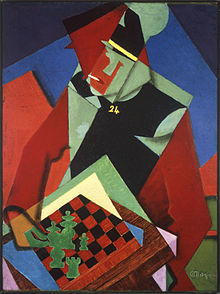
Leon Golub was an American painter. He was born in Chicago, Illinois, where he also studied, receiving his BA at the University of Chicago in 1942, and his BFA and MFA at the Art Institute of Chicago in 1949 and 1950, respectively.
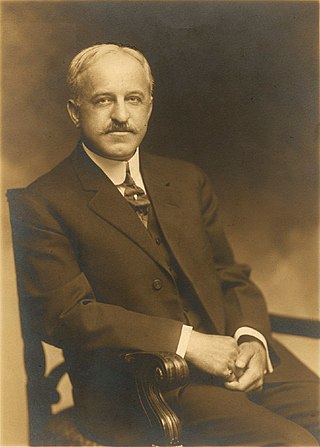
Samuel Henry Kress was a businessman, philanthropist, and founder of the S. H. Kress & Co. five and ten cent store chain. With his fortune, Kress amassed one of the most significant collections of Italian Renaissance and European artwork assembled in the 20th century. In the 1950s and 1960s, a foundation established by Kress would donate 776 works of art from the Kress collection to 18 regional art museums in the United States.

Carnegie Museums of Pittsburgh is a nonprofit organization that operates four museums in Pittsburgh, Pennsylvania, United States. The organization is headquartered in the Carnegie Institute and Library complex in the Oakland neighborhood of Pittsburgh. The Carnegie Institute complex, which includes the original museum, recital hall, and library, was added to the National Register of Historic Places on March 30, 1979.

Hasui Kawase was a Japanese artist who was one of 20th century Japan's most important and prolific printmakers. He was a prominent designer of the shin-hanga movement, whose artists depicted traditional subjects with a style influenced by Western art. Like many earlier ukiyo-e prints, Hasui's works were commonly landscapes, but displayed atmospheric effects and natural lighting.
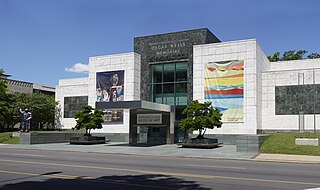
The Birmingham Museum of Art is a museum in Birmingham, Alabama. Its collection includes more than 24,000 paintings, sculptures, prints, drawings, and decorative arts representing various cultures, including Asian, European, American, African, Pre-Columbian, and Native American. The museum is also home to some Renaissance and Baroque paintings, sculptures,and decorative arts from the late 13th century to c. 1750.

The Samuel P. Harn Museum of Art is an art museum at the University of Florida in Gainesville, Florida. It is in the UF Cultural Plaza area in the southwest part of campus.
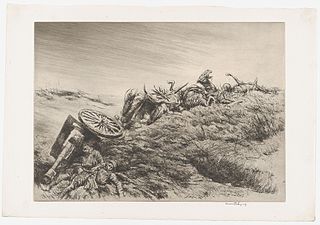
Kerr Eby was a Canadian illustrator best known for his renderings of soldiers in combat in the First and Second World Wars. He is held in a similar regard to Harvey Dunn and the other famous illustrators dispatched by the government to cover the First World War.

Edward Larrabee Barnes was an American architect. His work was characterized by the "fusing [of] Modernism with vernacular architecture and understated design." Barnes was best known for his adherence to strict geometry, simple monolithic shapes and attention to material detail. Among his best-known projects are the Haystack School, Christian Theological Seminary, Dallas Museum of Art, the Walker Art Center, 599 Lexington Avenue, the Thurgood Marshall Federal Judiciary Building, and the IBM Building at 590 Madison Avenue.

The Knoxville Museum of Art (KMA), is an art museum in Knoxville, Tennessee. It specializes in historical and contemporary art pieces from the East Tennessee region. According to its mission statement, the museum "celebrates the art and artists of East Tennessee, presents new art and new ideas, educates and serves a diverse community, enhances Knoxville’s quality of life, and operates ethically, responsibly, and transparently as a public trust."
The Chicago Imagists are a group of representational artists associated with the School of the Art Institute of Chicago who exhibited at the Hyde Park Art Center in the late 1960s.
Barbara Rossi was an American artist, one of the original Chicago Imagists, a group that in the 1960s and 1970s turned to representational art. She first exhibited with them at the Hyde Park Art Center in 1969. She is known for meticulously rendered drawings and cartoonish paintings, as well as a personal vernacular. She worked primarily by making reverse paintings on plexiglass that reference lowbrow and outsider art.

Horace Clifford Westermann was an American sculptor and printmaker. His sculptures frequently incorporated traditional carpentry and marquetry techniques. From the late 1950s until his death in 1981, Westermann worked with a number of materials and formal devices to address a range of personal, literary, artistic, and pop-cultural references. The artist's sculptural oeuvre is distinguished by its intricate craftsmanship, in which wood, metal, glass, and other materials are laboriously hand-tooled, and by its ability to convey an offbeat, often humorous, individualistic sensibility.

Stephen Arnold Douglas Volk was an American portrait and figure painter, muralist, and educator. He taught at the Cooper Union, the Art Students League of New York, and was one of the founders of the Minneapolis School of Fine Arts. He and his wife Marion established a summer artist colony in western Maine.
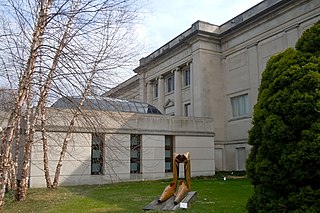
The Reading Public Museum is a museum in Reading, Pennsylvania located in the 18th Ward, along the Wyomissing Creek. The museum's permanent collection mainly focuses on art, science, and civilization and contains over 280,000 objects. It also has a planetarium and a 25-acre (100,000 m2) arboretum.

The University of Arizona Museum of Art (UAMA) is an art museum in Tucson, Arizona, operated by the University of Arizona. The museum's permanent collection includes more than 6,000 works of art, including paintings, sculptures, prints and drawings with an emphasis on European and American fine art from the Renaissance to the present.
Culture Coast Chicago is a collection of artistically vibrant neighborhoods on the South Side of Chicago, Illinois, United States. Known for its high concentration of museums, music and theater ensembles, performance venues, cultural nonprofits, and arts education opportunities, the region spans from just south of McCormick Place to the South Shore Cultural Center and is bordered by Lake Michigan to the east and the Dan Ryan Expressway to the west.
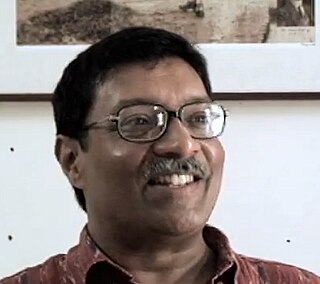
Ram Rahman is a noted contemporary Indian photographer and curator. based in Delhi. He is one of the founding members of the Safdar Hashmi Memorial Trust (SAHMAT) in New Delhi, a leader in the resistance to communal and sectarian forces in India through its public cultural action.
Mu Xin is the pen name of Sun Pu, courtesy name Yangzhong, a Chinese painter, poet and writer. His works draw on both Chinese and Western traditions. The pen name Mu Xin is derived from Hang Dynasty Poetry 《木鐸含心》"the bronze bell has ringing heart of wood".
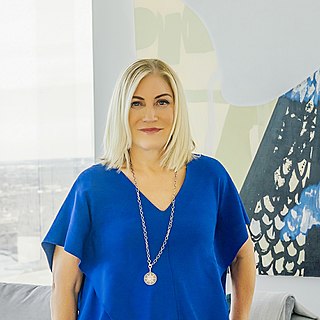
Suzanne Deal Booth is an American art director, collector, philanthropist, and vintner. She has worked as an arts advisor and is the Founder and the Director of Friends of Heritage Preservation (FOHP).
Alison "Ali" Gass is an American curator and museum director. She is the founding director of the Institute of Contemporary Art San Francisco. She has served as the director of the Institute of Contemporary Art San José, Smart Museum of Art, and chief curator of the Cantor Arts Center at Stanford University.


